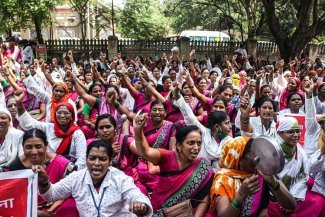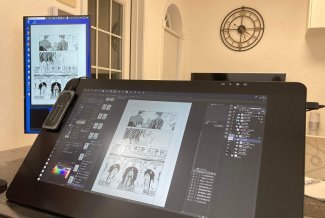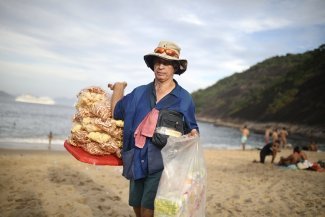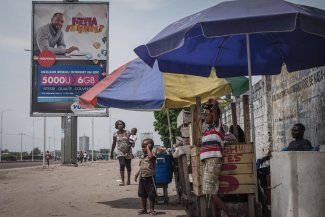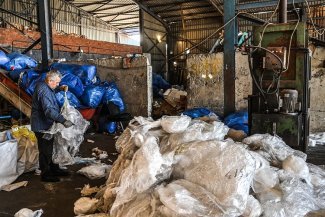In the United States, a country with 323 million inhabitants, there are an estimated 11 to 12 million undocumented migrants, of which tens of thousands are locked up in detention centres awaiting a bureaucratic decision regarding their fate.
The relatively low number of detainees means they are very rarely the focus of public attention or concern amongst politician.
Undocumented immigrants cannot vote, and those in detention, if anyone remembers them, only serve to allow the government to publicise its hard line on immigration.
“Some spend months and years in there. Others are there for a few weeks,” said Cristina Parker, programmes director of Grassroots Leadership, an organisation campaigning for an end to for-profit incarceration, in an interview with Equal Times. “There are minors with their families in these facilities, two of which are in Texas and one in Pennsylvania.”
The detention centres “are like prisons, with heavy metal doors and fences,” explained Parker. “You can’t enter them without authorisation. Some of the detainees have access to legal advice, but it is not something that’s guaranteed.”
With only five per cent of the world population, the United States holds over 20 per cent of the world’s prison population, in local, state and federal prisons. With over 2.3 million people convicted, imprisoned or detained, and the trend towards privatising prisons, it is an attractive business. The detention centres for undocumented immigrants, although a small slice of the cake, also generate profits.
And with the growth in the flow of migrants and refugees this decade, the sector is doing well.
Detention centres: a source of employment and revenues
Many western governments are currently outsourcing the management of prisons on the grounds that it saves money.
In 2014, the British government signed a seven-year contract for 100 million dollars with the security firm Serco, for the management of the Yarl’s Wood Immigration Removal Centre; the Australian government contracted Broadspectrum to manage two detention camps for asylum seekers in Nauru and Papua New Guinea; and Hero Norge, which manages 90 refugee centres in Norway and ten in Sweden, charges their governments between US$31 and $75 a night per person.
A 2013 report by the research centre In The Public Interest (ITPI) revealed that private firms managing prisons negotiate agreements with states to guarantee high occupancy rates at the facilities.
Favourable terms included in 41 contracts either set minimum occupancy quotas or force taxpayers to cover the cost of empty beds if the prison population falls. Some of these contracts require 90 to 100 per cent occupancy quotas.
In its 2014 annual report, the Corrections Corporation of America (CCA), the biggest private firm in the prison business, expressed its concern that the changes to immigration laws being discussed at the time could lead to a fall in the company’s income.
The CCA owns and runs 66 prisons and detention centres with a total of over 90,000 beds in 20 states and the District of Columbia. In 2011, the firm earned US$1.7 billion, of which 214 million came directly from contracts with the immigration authorities. The GEO Group, the second largest firm in the sector, owns 65 prisons and detention centres with over 65,000 beds. In 2011, its revenues totalled US$1.6 billion.
The private contractors, which control half of the beds in the network of 82 detention centres of the Immigration and Customs Enforcement (ICE) agency, which comes under the Department of Homeland Security, charge the government around US$150 a day for each detainee.
These private prisons are also a source of employment and income for the local community. Eloy, in Arizona, for example, with a population of 10,000 free inhabitants, has three prisons and a detention camp for immigrants, which between them house 7,000 detainees.
The four facilities, run by the CCA, provide employment for 1,600 people. In addition, given that Arizona counts prisoners and detainees as residents in its Census, the city receives around US$2 million a year in state subsidies, amounting to 17 per cent of the municipal fund for general expenditure.
On 17 March, Sarah Saldaña, director of Immigration and Customs Enforcement, budgeted 1.4 billion dollars for the payment of 29,953 beds for adult detainees for the 2017 financial year (which commences on 1 October).
The proposal failed to satisfy the Republicans, who have a majority in both houses of Congress. John Carter, the representative from Texas, said the idea of reducing the number of beds from 34,000 to 30,193 “doesn’t make sense”.
“The requirement for detention beds is likely to exceed 34,000,” insisted Carter.
To the relief of the CCA and other firms in the sector, Congress proved incapable, as it has for the last three decades, of approving a comprehensive reform of the immigration laws, and has thus ensured that millions of people will continue to live in an irregular situation, placing them constantly on the brink of detention and, potentially, deportation. Almost half of all undocumented immigrants in detention are currently being held in facilities managed by private firms.
Conditions sacrificed to maximise savings
The death, last year, of Mexican national José de Jesús Deniz Sahagún at the Eloy Detention Center, drew some attention to the conditions in which thousands of undocumented immigrants are being held, as well as to the reasons why many of them have left their countries and fear going back. Fourteen detainees have died in Eloy since 2004, twice as many as in any other detention centre for undocumented immigrants.
Just one day after a social assistant placed him under continuous observation, 31-year-old Deniz committed suicide by lodging a cotton sock in his throat. He is the sixth person to commit suicide at the facility.
“The sad reality is José de Jesús Deniz-Sahagún’s death is far from an isolated incident of medical neglect in an immigrant detention facility,” said Raul Grijalva, Democrat Representative for Arizona, before the US Congress. “A recent report by the American Civil Liberties Union (ACLU) demonstrates how egregious violations of medical standards by Immigration and Customs Enforcement (ICE) played a significant role in nearly half of the deaths” that the civil liberties observatory was able to examine.
Grijalva points out that the CCA, the firm running the Eloy centre where Deniz died, “saw a $49 million increase in their second-quarter earnings in 2015 as compared to the same time period in 2014. Just one of their facilities, in Dilley, Texas, generated US$100 million in the first half of 2015”.
“CCA and others like it maximise profits by minimising concern for the people they ensnare,” argued the legislator. “For considerations of food, clothing, medical and dental needs, education, and amenities, every dollar they spend is a dollar off their bottom line. Is it any wonder, then, that so many fatalities from medical neglect are taking place in for-profit facilities?”
According to an article in VICE magazine, 155 men and women have died inside immigration detention centres since 2003.
A piece by Seth Freed Wessler in The Nation covers the cases of 25 men who died in immigration detention centres as a result of inadequate care.
Immigrants in detention basically have two options, with the many nuances depending on each individual situation and the criteria of the authorities.
The most simple and expeditious is immediate (and voluntary) deportation.
The second is to request asylum and a deportation hearing. If the application is approved, the person may be released on bail (paying between US$1,000 and $10,000) or be outfitted with an ankle monitor, pending the removal hearing.
The decisions require legal advice that few immigrants have.
“There is simply no humane way to detain families,” said Víctor Nieblas Pradis, president of the American Immigration Lawyers’ Association (AILA). “Asylum seeking families should be given due process, not expedited removal.”
AILA has come together with Catholic Legal Immigration Network, the American Immigration Council and the Refugee and Immigrant Center for Education and Legal Services in an alliance known as CARA, mobilising hundreds of lawyers providing, insofar as possible, pro bono legal services to detainees.
Nick Rock, a lawyer from Omaha, Nebraska, recently visited the Dilley detention centre in Texas, which holds between 1,400 and 1,500 undocumented immigrants. “I was able to meet with three groups of around 120 people in the morning, and three similar sized groups in the afternoon,” he told Equal Times. “I met over 700 people in total, and tried to explain the options. Aside from that, I was able to meet with around 40 to 50 people individually.”
Despite the electoral rhetoric this year and the widely held belief amongst citizens that the United States is being flooded with Mexicans, the fact is that the number of illegal border crossings from the south has fallen in recent years and the flow of Mexicans, in particular, has diminished. The presence of those fleeing violence and crime in central America and south America is, by contrast, become ever more apparent.
“The majority of those I saw in Dilley are from Ecuador, Honduras, El Salvador,” continued Rock. “In Dilley, they are all women, many with children ranging from small babies to adolescents. There is a some kind of child care facility, but it is very small, with a capacity for around seven children.”
The Dilley detention centre “breaks your heart”.
“They are not equipped to handle the situations of these families,” insists Rock. “Many of these women have been raped. There is no gynaecological care there. They may have venereal diseases and not be aware of it. When they have a cough, the only prescription is to drink more water. And the people who are released, on bail or with ankle monitors, are going to come up against a culture they don’t understand.”
Rock was surprised at “how genuine, how honest these women are”. If they had the opportunity of a hearing before an immigration judge, with the proper legal support, these women could secure asylum in the United States, in light of the threat to their lives that drove them to flee, crossing through countries with their children in tow.
“They don’t say much. And they start out telling you that yes, that they are willing to go back to their countries. But if you speak to them a little longer, they break down and start to tell you about the abuses, the threats, the gangs that control the neighbourhoods, and the real threats awaiting them in their countries,” adds Rock. “When they realise they are going to be sent back, they go to pieces. They don’t want to go back to the danger. They tremble and are terrified of being forced to go back.”


